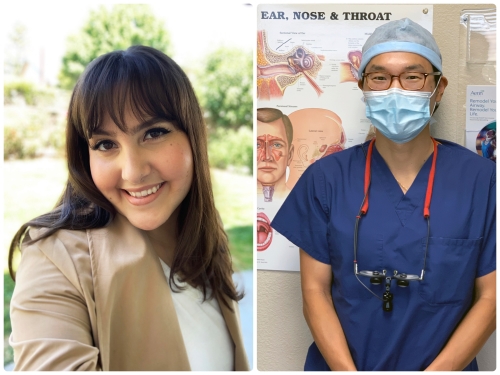
Sleep Apnea Treatment
People with sleep apnea stop breathing while they sleep, sometimes hundreds of times per night, and sometimes for a minute or longer. Sleep apnea affects about 18 million people of all ages in the U.S. and takes three forms: obstructive, central and mixed. Obstructive sleep apnea (OSA), the most common form, occurs when the soft tissue at the back of the throat closes, blocking (obstructing) the person’s airway. The airway remains open in central sleep apnea, but the brain does not send signals to the muscles involved in breathing. Mixed sleep apnea combines aspects of the obstructive and central types. A common warning sign of sleep apnea is snoring (especially snoring interspersed with gasps or lack of breathing), although snoring does not always occur as a result of sleep apnea.
Because sufferers are roused from sleep briefly to resume proper breathing, disrupting and lowering the quality of a person’s rest, sleep apnea can cause a number of problems. If left untreated, it can result in high blood pressure, cardiovascular disease, stroke, memory problems, weight gain, impotency, headaches, and daytime fatigue leading to job impairment and motor vehicle crashes.
Treatments for sleep apnea include:
- Sedated Functional Sleep Endoscopy
- In-Home Sleep Testing with CPAP Titration
- Turbinate Reduction / Coblation Turbinoplasty
- Tonsillectomy
- Uvulopalatopharyngoplasty (UPPP)
- Hyoid Suspension
- Lateral Pharyngoplasty
- Mandibular Advancement Device
Sedated Functional Sleep Endoscopy
Sleep Endoscopy refers to a procedure performed under sedation which allows for an assessment of a patient’s airway adequacy (as well as any vibration or associated sounds made during respiration). By coming as close to a natural sleep state as possible, this assessment provides invaluable information in cases of suspected sleep apnea or disruptive snoring, which is often not gathered during a completely awake office visit. The specialist is also able to alter head and neck position, and provide airway support during the endoscopy, allowing for effective nonsurgical remedy of the sleep-associated airway narrowing. In cases where airway surgery is found to be indicated, this can often be performed at the same time as the diagnostic endoscopy.
In-Home Sleep Testing With CPAP Titration
In-Home Sleep Testing with CPAP Titration enables patients to undergo sleep studies from the comfort of their own bedroom for a more accurate diagnosis. Your doctor may recommend a sleep study if he suspects you are suffering from obstructive sleep apnea. To perform the in-home sleep testing, the patient will receive a portable monitor that measures activity while they are sleeping, and a CPAP device. The CPAP device is connected to the mouth, and it will automatically titrate, or adjust the amount of air pressure needed to breathe during sleep without causing apnea. For accurate test results, you must sleep for at least two hours on the night of your sleep testing. The next day, you return the monitor and the CPAP device to your doctor, who will interpret the results and create a customized treatment plan for your individual condition.
Turbinate Reduction / Coblation Turbinoplasty
Coblation turbinoplasty is an effective treatment for snoring that painlessly removes the tissue that causes nasal obstruction with radio-frequency technology. Patients who suffer from loud snoring have enlarged turbinates that affect their breathing and block the nasal passage. This procedure can also be used to treat chronic nasal congestion, facial pressure and nasal drainage.
During the procedure, local anesthetic will be applied to the nose to minimize any discomfort. A special wand is inserted into each turbinate to carefully remove excess tissue, instantaneously reducing the size of the turbinate. The wand then applies coblation therapy to the area to create a channel within the turbinate. After the coblation procedure, the channel in the turbinate will shrink, relieving nasal obstruction and restoring normal breathing. This will help effectively relieve snoring and other breathing problems.
-
ENT/Otolaryngology ENT, Otolaryngology 2557 Mowry Ave.
Suite 30
Fremont, CA 94538
(510) 248-1590 More Information




